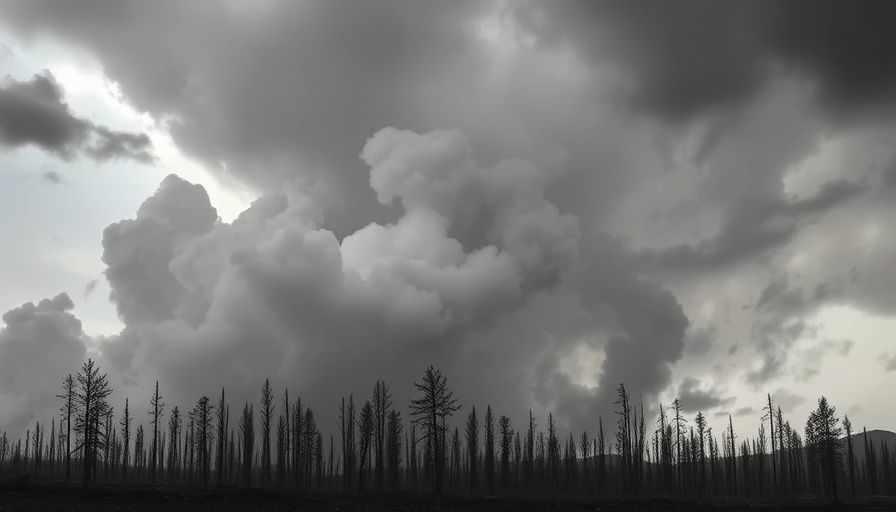
Understanding the Risk: The Aftermath of Wildfires
The increasing frequency and severity of wildfires have left property owners grappling not only with the immediate devastation but also the complex aftermath that follows. Kristan Lund, a meteorologist from the National Weather Service, emphasized the significance of preparation, stating, "This is the worst-case scenario to prepare for," referring to the cascading effects of recent wildfires in Los Angeles followed by heavy rainfall.
The chaos is often compounded by flooding and mudslides, which further devastate already damaged properties. The recovery process is not limited to physical rebuilding; it involves intricate planning, including obtaining permits and navigating delays. Property owners need access to a comprehensive guide to manage insurance, debris removal, and reconstruction effectively.
Navigating Insurance Challenges: What You Must Know
One of the foremost challenges for affected property owners is uncertainty about insurance coverage. Many homeowners discover that their policies exclude coverage for flooding and earth movements—complications that often arise post-wildfire. However, in California, the "efficient proximate cause" doctrine offers a potential pathway for claims, where the primary cause of the flood or mudslide—often the wildfire itself—can enable property owners to file claims. Understanding this doctrine underscores the importance of documentation and evidence of the wildfire's impact.
The Role of Debris Removal in Reconstruction
Before the reconstruction phase can commence, effective debris removal is essential; it paves the way for rebuilding efforts. Los Angeles County has initiated a debris removal program that assists homeowners at no cost, allowing insurance funds to be preserved for rebuilding rather than depleting them for clean-up. However, homeowners venturing for private debris removal face the risk of their cleanup expenses being deducted from insurance payouts, which could severely limit their available funds for reconstruction.
Preparing for Reconstruction: Insight into Industry Challenges
The road to reconstruction is fraught with obstacles. Beyond debris removal, challenges such as supply chain disruptions, material shortages, and elevated labor costs are noteworthy. Additionally, the potential implementation of tariffs under the Trump Administration only stands to exacerbate these costs, making comprehensive planning vital. Property owners must remain informed about local building codes that may have changed post-disaster and understand how these can impact their insurance benefits.
Maximizing Insurance Recovery: Key Steps for Property Owners
For property owners seeking to navigate this maze effectively, there are actionable steps to maximize potential insurance recovery:
- Understand Your Coverage: Familiarize yourself with your insurance policy details regarding wildfires, floods, and mudslides.
- File Claims Promptly: Ensure timely reporting of losses and keep thorough documentation.
- Request Advance Payments: Leverage your status as a policyholder to receive advance payments for necessary expenses without itemization.
- Utilize Official Removal Programs: Engage city or county debris removal initiatives to avoid out-of-pocket costs that reduce insurance payouts.
- Document Everything: Use photographs and videos to create comprehensive records of damage.
The Path Forward: Community Resilience and Recovery
As communities embrace recovery from the aftermath of wildfires, it is essential to recognize the links between environmental resilience and property owner preparedness. The experience gained from these challenges lays a foundation for future improvements in disaster response and reconstruction efforts. By being well-informed, proactive, and engaged, property owners can not only recover but also contribute to the rebuilding of their communities.
 Add Row
Add Row  Add
Add 




 Add Row
Add Row  Add
Add 

Write A Comment